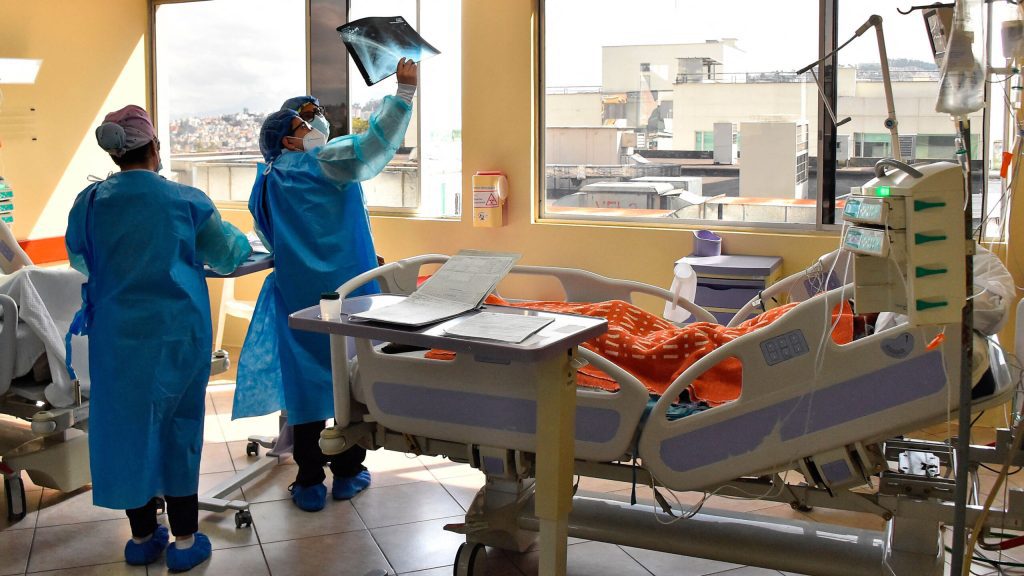The strong reaction of a lung's protector against infection could help explain why COVID-19 becomes severe.
The guardians, a type of immune cells called interstitial macrophages, patrol lung tissue. These cells can be heavily infected by SARS-CoV-2, researchers report online April 10 in the Journal of Experimental Medicine. Overwhelmed by the virus’ attack, the cells’ excessive inflammatory response may contribute to the development of pneumonia, a disease that harms the lungs and makes breathing difficult.
“There is a gap in our understanding of how human lung tissue actually reacts in the early stages” of a SARS-CoV-2 infection, says José Ordovás–Montañés, an immunologist at Boston Children’s Hospital and Harvard Medical School, who was not involved in the research. The new work has “highlighted interstitial macrophages’ role,” he says. “I think this is an interesting piece of the puzzle.”
A bout of COVID-19 can start after someone inhales the coronavirus, which — released by a sneeze or a cough — spreads through the air (SN: 12/16/21). Evidence suggests the virus first infects cells that line the nasal cavity or the throat, and then the immune system response kicks in. From that point, many people clear the infection, says Catherine Blish, a viral immunologist at Stanford University School of Medicine. But some don’t, and the virus can spread into the airways of the lungs and infect cells lining the air sacs, the structures where oxygen and carbon dioxide are exchanged.
Blish and her colleagues wanted to investigate the next steps of a coronavirus infection in the lungs and what might drive the progression to pneumonia. The team worked with thin slices of human lung tissue, procured from organ donations or surgeries in which some of the tissue needed to be removed. The researchers exposed the tissue to SARS-CoV-2 to see which cells became infected. “It was really no contest,” Blish says. The vast majority were macrophages, immune cells that take up viruses and other pathogens and “eat” them to present the parts to other immune cells. This helps activate the body’s immune response.
Specifically, there were two types of macrophages: Those that reside in the lung tissue, called interstitial, and those associated with the air sacs. The researchers took purified macrophages of each type and put them in a dish with SARS-CoV-2 for additional experiments to show that the cells were being infected, not just gobbling up virus. The team also probed the immune response of the two populations of macrophages. Those that reside in the lungs’ air sacs weren’t as dominated by the virus and produced a proportionate inflammatory response.
But the coronavirus was able to take over the cellular machinery of the interstitial macrophages. The team found that in response, these macrophages ramped up their production of proteins that target viruses and call in other immune cells. The cells are “sending massive alarm signals … ‘There’s an invader, danger, danger’,” Blish says.
According to Blish, this type of immune reaction in the body can cause a large number of cells and proteins that cause swelling to enter the air space in the lungs. This can weaken the air sacs' ability to work properly and make pneumonia more likely.
Blish and colleagues discovered that SARS-CoV-2 uses a different receptor to enter interstitial macrophages compared to other cells, such as ACE2. This could help explain why treatments targeting ACE2 have not been effective for severe pneumonia, according to Blish.
According to Blish, experiments with lung slices cannot perfectly replicate what happens in the body. The study does not explain how the virus would enter the lung tissue and reach the interstitial macrophages.
“It’s a reasonable model to propose,” says Ordovás–Montañés. However, with lung slices, “any cell on the outer or inner part of the lung” has an equal chance of getting infected. It could be beneficial to supplement this research with studies in animal models that have intact lung physiology, although these types of studies do not exactly represent what happens in people. “Each model will give you a somewhat distorted view of reality.”



